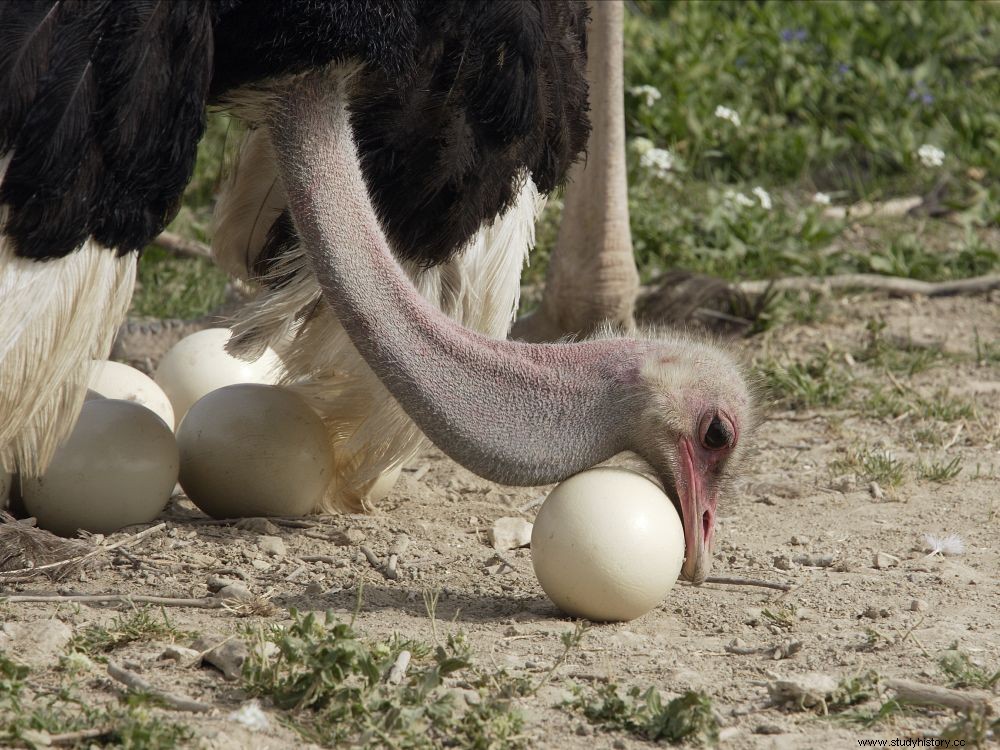After the discovery of a protein in a 3.5 million year old fossil camel, another macromolecule older than 300,000 years was isolated in an eggshell in Tanzania. Proteins resist the wear and tear of time better than DNA.

An ostrich and eggs:their shells are capable of preserving proteins for millions of years.
BINDER The volcanic site of Laetoli, Tanzania, already famous for delivering the oldest footprints of mankind, also preserved a very ancient protein. The oldest discovery in the world to date (at least without dispute). It was in the shell of a fossil ostrich egg exhumed in the field that an international team led by archaeologist Matthew Collins, from the University of York (Great Britain) isolated a protein sequence dated 3 .8 million years old. "Proteins hold up better in the fossil record than DNA, explains this researcher specializing in biological macromolecules. But the longevity, survival mechanisms and substrates that enable this conservation are controversial. Here, we have demonstrated that the minerals in the shell act as a binder, which allows for long preservation" . The same researchers also isolated protein sequences in more recent eggs, dated to only 1.3 million years (Ma) from the Olduvai Gorge in Tanzania. "Our surprise is that protein sequences were preserved in such a fragile substrate - a thin shell - and at such a hot temperature, in an African climate ". Proteins 3.5 million years old had previously been found on the remains of a prehistoric cousin of the camel, but preserved in the frozen soils of Ellesmere Island, in the Arctic Ocean! A protein would have also found on a fossil of T. rex 68 Ma old, but this discovery of 2007 remains very controversial.
Species and diet information
Increasingly practiced, the study of the organic matter that makes up the paleontological remains remains a scientific challenge. In particular, proteins make it possible to know more about the diet of its "carrier" and indirectly about its environment. Very recently, the analysis of 40,000-year-old proteins allowed the identification of a Neanderthal in the cave of Arcy-sur-Cure from meager remains "indecipherable" for bone specialists. Molecular archaeologists have high hopes for these macromolecules to go back in time. The oldest DNA found to date is that of a horse dated 700,000 years old, while the oldest human DNA ever analyzed is 400,000 years old (Read Sciences and Future n° 827 ).
